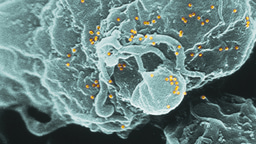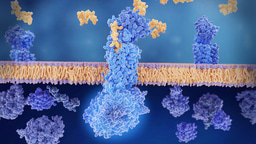Physical, chemical, and mineralogical properties of agromarine waste ash
Published in Materials, Sustainability, and Mechanical Engineering

Turning Agro-Marine Waste into Valuable Industrial Materials
Did you know that everyday materials like plantain stems, eucalyptus wood, and periwinkle shells, often seen as waste, can be turned into powerful resources for building and manufacturing?
Our latest study explores how agro-marine waste ashes can be transformed into sustainable materials by carefully analyzing their physical, chemical, and mineral properties.
✅ What we studied:
We focused on ashes made from:
-
Periwinkle Shells (PSP)
-
Plantain Stems (PSA)
-
Eucalyptus Wood (EWA)
Using advanced tools like X-ray fluorescence (XRF), SEM (microscopy), and XRD (mineral analysis), we discovered the unique characteristics of each type of ash, such as their bulk density, particle size, oxide composition, and surface structure.
🔍 Key Findings:
-
PSP ash has high strength and density, ideal for load-bearing construction materials.
-
PSA ash has fine particles and low moisture, perfect for mixing into cement and concrete.
-
EWA ash is lightweight, great for insulation and other lightweight applications.
-
All ashes contain useful compounds like calcium oxide (CaO), silica (SiO₂), and potassium oxide (K₂O) that enhance material performance.
💡 Why it matters:
Agro-marine waste is often burned or dumped, harming the environment. Our research shows a better path: turning waste into wealth by using it in industries such as construction, manufacturing, and agriculture.
This work supports the global move toward a circular economy, where nothing is wasted, and everything has value.
📖 Read the full study to see how ash from natural waste can power a more sustainable future.
📩 Interested in collaboration or application? Let’s connect!
Follow the Topic
-
Discover Materials

This is a broad, open access journal publishing research from across all fields of materials research.
What are SDG Topics?
An introduction to Sustainable Development Goals (SDGs) Topics and their role in highlighting sustainable development research.
Continue reading announcementRelated Collections
With Collections, you can get published faster and increase your visibility.
Reuse and Recycling of Waste in the Construction Sector
The construction sector is one of the largest producers of waste, contributing significantly to global environmental challenges. In recent years, there has been a growing emphasis on sustainable practices, particularly in the reuse and recycling of construction and demolition waste, municipal solid waste, and industrial waste. Addressing the environmental impact of this waste is critical for sustainable development. This collection explores innovative strategies, technologies, and policies aimed at minimizing waste, promoting resource efficiency, aiming to reduce landfill dependency, and advancing sustainable building practices within the construction industry.
This collection invites comprehensive research and practical insights into various aspects of waste management in the construction sector, including:
1. Construction and Demolition Waste: Innovative methods for recycling and reusing concrete, asphalt, metals, wood, and other materials from construction and demolition sites.
2. Municipal Solid Waste: Strategies for integrating recycled municipal solid waste materials, such as glass, plastics, and organic matter, into construction projects.
3. Industrial Waste: Techniques for repurposing industrial by-products and waste materials in construction, including slag, fly ash, and manufacturing residues.
4. Policy and Regulation: Examination of governmental policies, regulations, and incentives that facilitate the reuse and recycling of various waste types in construction.
5. Sustainable Construction Practices: Implementation of circular economy principles in construction, including design for disassembly, modular construction, and sustainable material sourcing.
6. Environmental and Economic Impacts: Evaluation of the environmental benefits and economic feasibility of recycling and reusing different types of waste in the construction sector, including life cycle and cost-benefit analyses.
7. Technological Advances: Development and application of advanced technologies, such as artificial intelligence, machine learning, and robotics, to optimize waste management and recycling processes in construction.
8. Material Innovation: Research new materials and products derived from recycled waste, assessing their performance, durability, and potential applications in construction.
9. Case Studies and Best Practices: Documentation of successful projects and initiatives that highlight effective reuse and recycling strategies in the construction industry.
By bringing together cutting-edge research and practical insights, this collection aims to provide a comprehensive overview of the current state and future directions of waste reuse and recycling in the construction sector. Contributions from academics, industry professionals, policymakers, and other stakeholders are encouraged to foster a multidisciplinary dialogue and drive meaningful change in the industry.
Keywords: Construction Waste Management; Recycling Techniques; Reuse Strategies; Sustainable Construction; Municipal Solid Waste; Environmental Impact; Circular Economy; Industrial Waste Recycling
Publishing Model: Open Access
Deadline: Jun 30, 2026
Materials in Structural Engineering: Challenges and Innovations under Extreme Loading Conditions
In the realm of materials science and engineering, the quest for robust, resilient materials capable of withstanding extreme loading conditions is more pressing than ever. The field of structural engineering, at the forefront of this endeavor, faces constant challenges posed by natural disasters, industrial accidents, and deliberate acts of violence. The ability of structures to endure such events depends crucially on the properties and performance of the materials from which they are constructed. Discover Materials, as part of the Discover journal series committed to advancing materials research, provides an ideal platform for addressing these challenges and exploring innovative solutions.
The proposed topical collection, titled "Materials in Structural Engineering: Challenges and Innovations under Extreme Loading Conditions," aims to delve deeply into the intersection of materials science and structural resilience. This collection is driven by the urgent need to develop materials that can withstand diverse forms of extreme loading, including blast and impact forces, while maintaining structural integrity. Real-world scenarios underscore the importance of this research: from safeguarding critical infrastructure against terrorist attacks to preparing communities for natural disasters like earthquakes and hurricanes, the resilience of materials directly impacts public safety and economic stability.
This collection will encompass a diverse array of topics essential to advancing our understanding and capabilities in structural engineering. Key themes include but are not limited to:
(1) Experimental studies on the behavior of structural materials subjected to blast and impact forces, aiming to uncover fundamental mechanisms and develop protective measures;
(2) Analytical modeling approaches to simulate and predict the response of structures under extreme loading conditions, facilitating the design of resilient systems;
(3) Numerical simulations that leverage advanced computational methods to model complex interactions between materials and dynamic forces;
(4) Application of machine learning techniques to analyze vast datasets and extract actionable insights for enhancing structural resilience.
At its core, this topic collection aligns with Discover Materials' mission to catalyze innovation in materials research across diverse applications. By publishing pioneering research in structural engineering, the collection aims to not only expand our fundamental understanding of materials behavior but also to accelerate the development of materials with enhanced properties for a safer and more sustainable built environment.
Authors are invited to submit original research articles, reviews, and case studies that contribute to the understanding of structural materials under extreme loading conditions. Submissions should emphasize practical applications and theoretical advancements relevant to the fields of structural engineering and materials science.
This Collection will serve as a valuable resource for researchers, engineers, and policymakers involved in the design, analysis, and implementation of materials in structural applications. It aims to foster collaboration and innovation in addressing the challenges posed by extreme loading scenarios through cutting-edge research and technological advancements.
Feature Conferences: 1. 2025 International Conference on Materials, Mechanical, and Civil Engineering Technologies (MMCET 2025), to be held in Tokyo, Japan, from December 17th to 19th, 2025. 2. 2025 2nd International Symposium on Civil Engineering and Smart Structure Technology (CESST 2025), to be held in Zhengzhou, China, from December 5th to 7th, 2025. High-quality papers presented at the conference will be invited for consideration in this Collection, ensuring a rigorous peer-review process. We welcome innovative research that advances knowledge in this critical field.Keywords: Structural Engineering; Extreme Loading Conditions; Blast and Impact Forces; Concrete Testing; Resilient Infrastructure; Material Performance; Simulations; Finite Element Modeling
Publishing Model: Open Access
Deadline: Mar 31, 2026




Please sign in or register for FREE
If you are a registered user on Research Communities by Springer Nature, please sign in